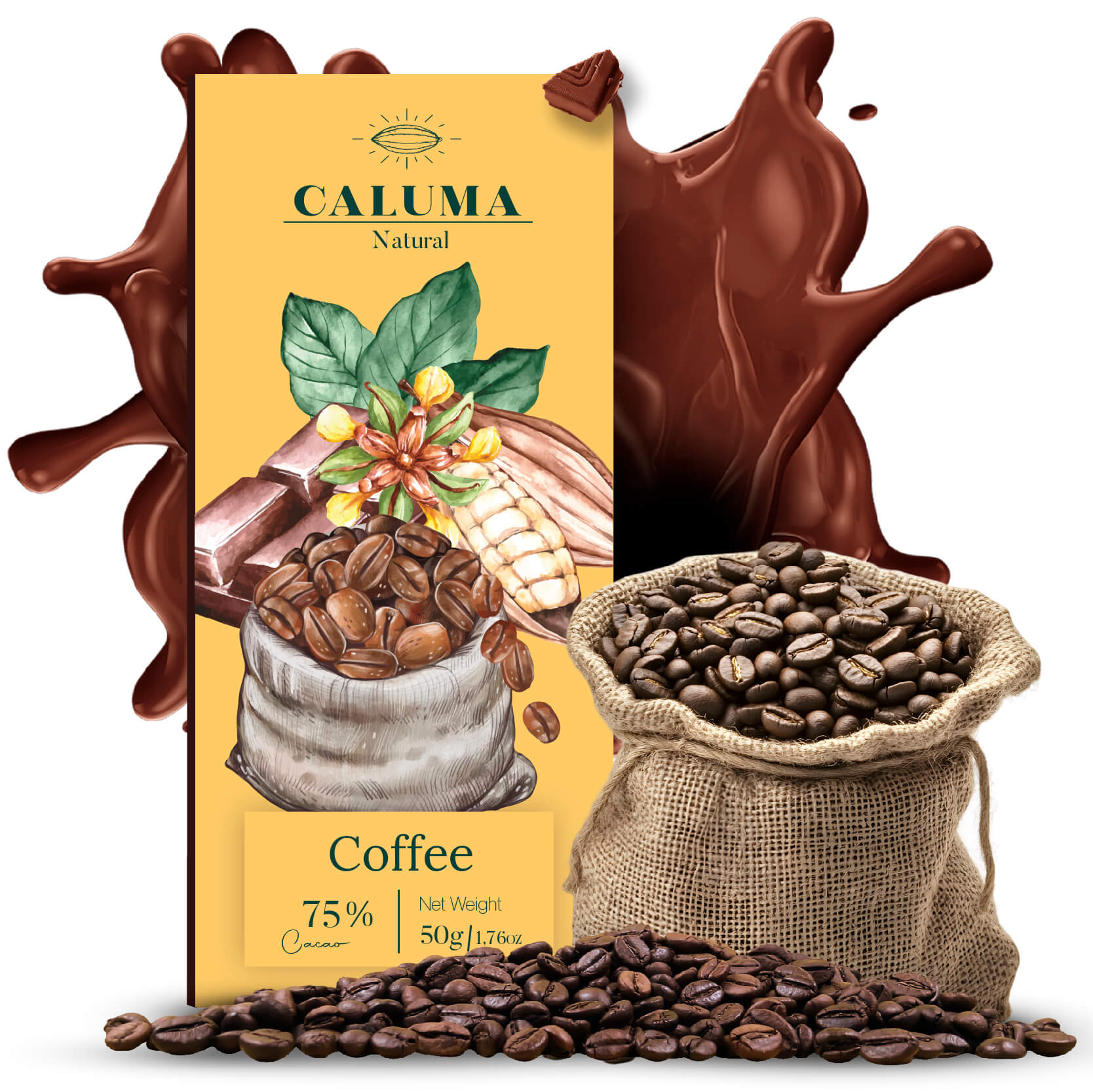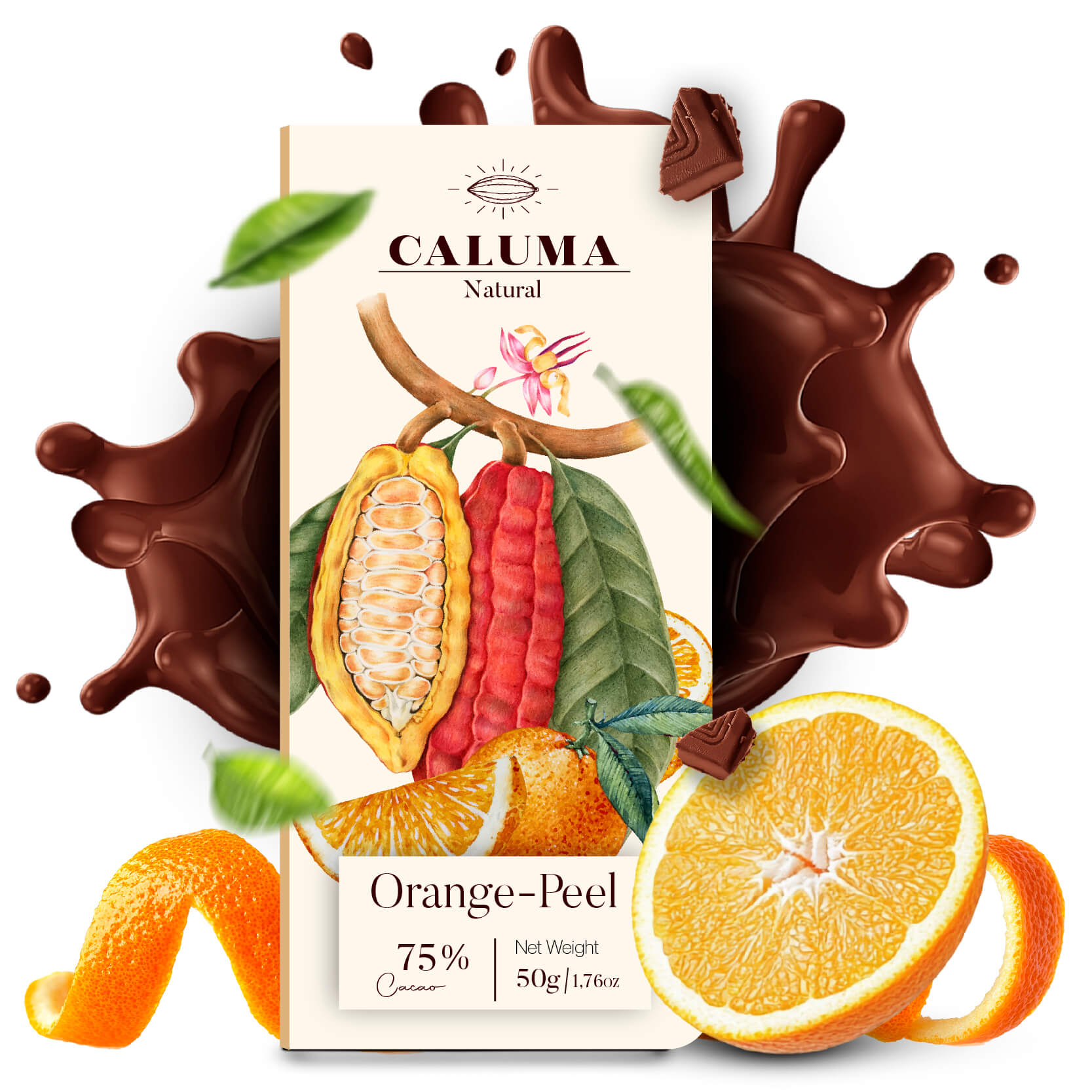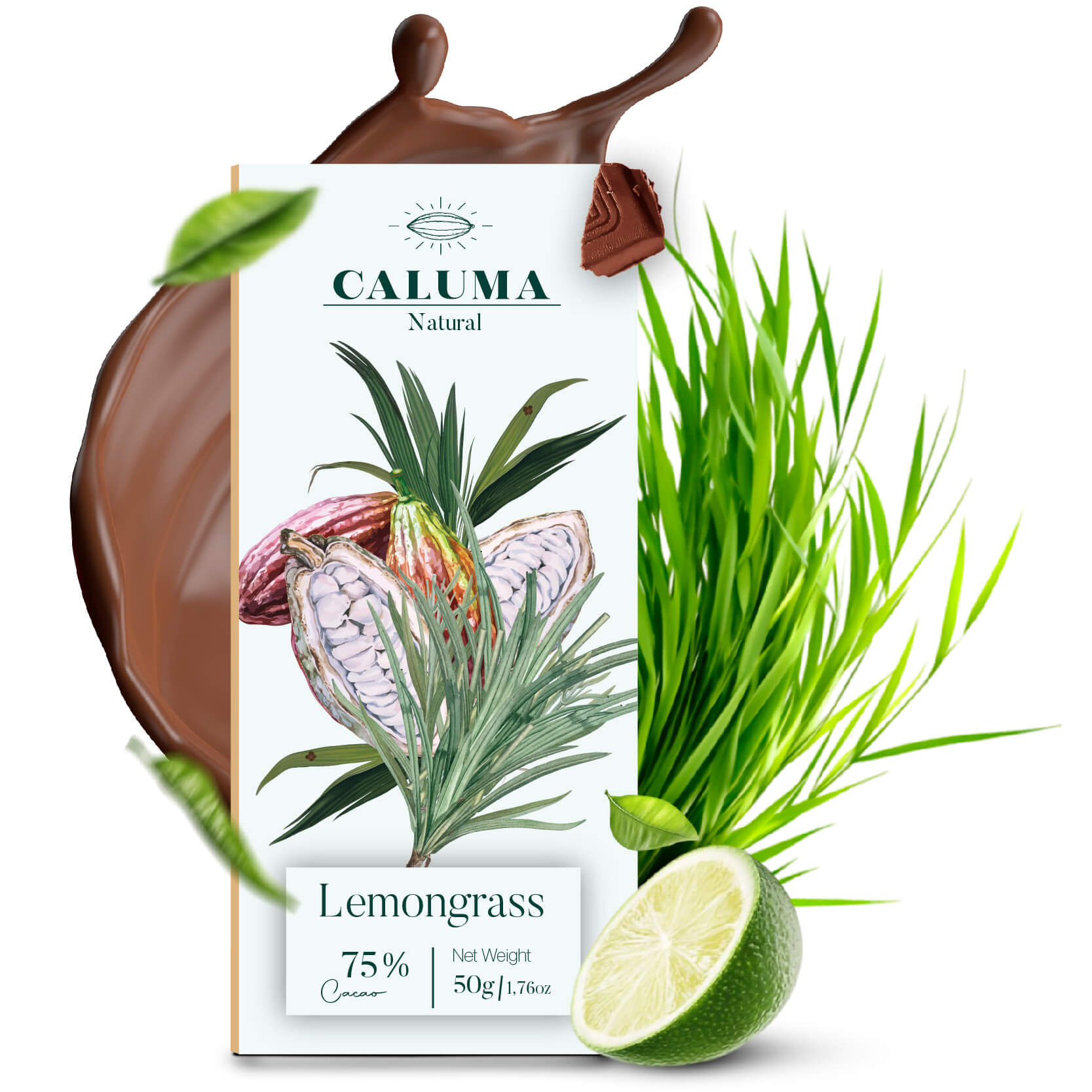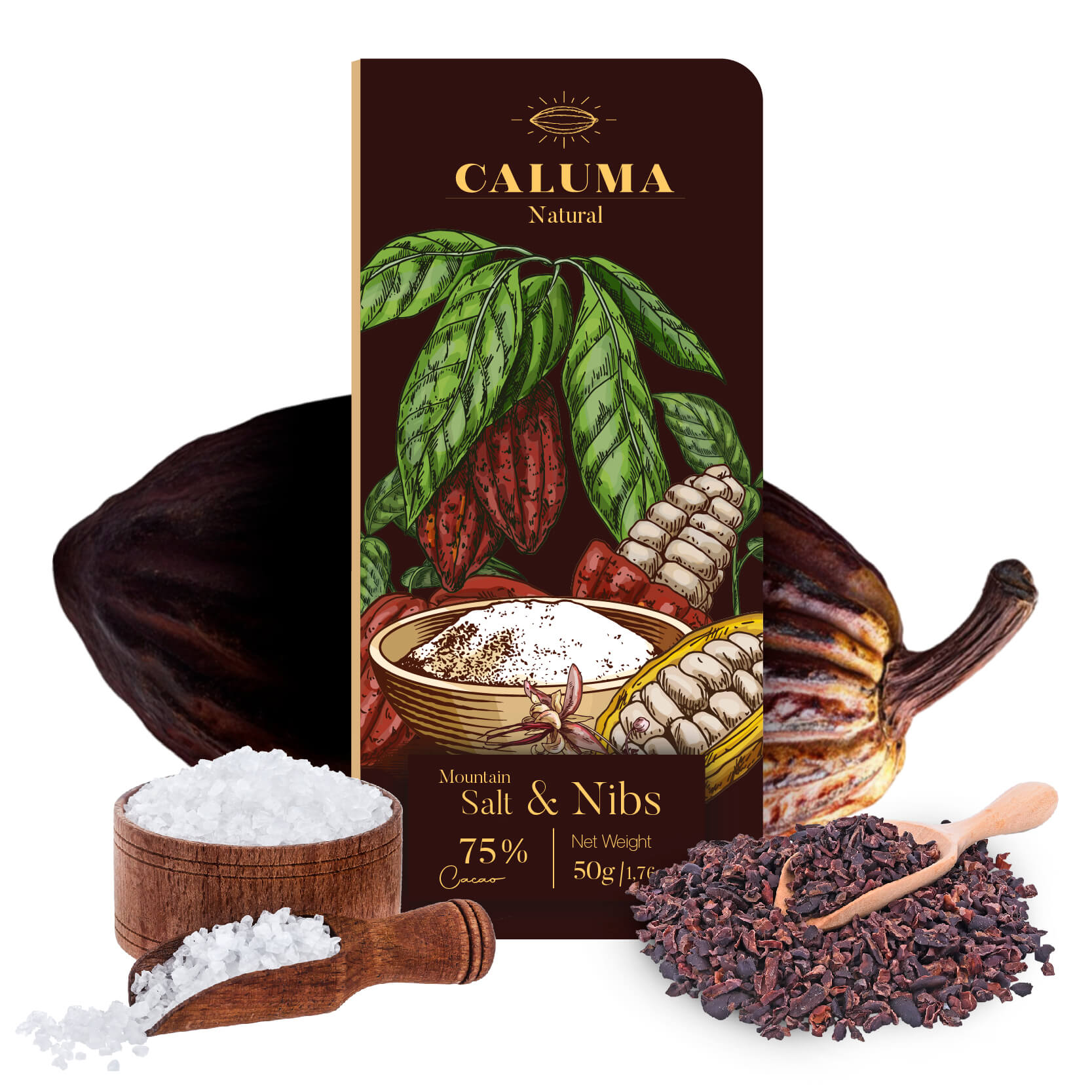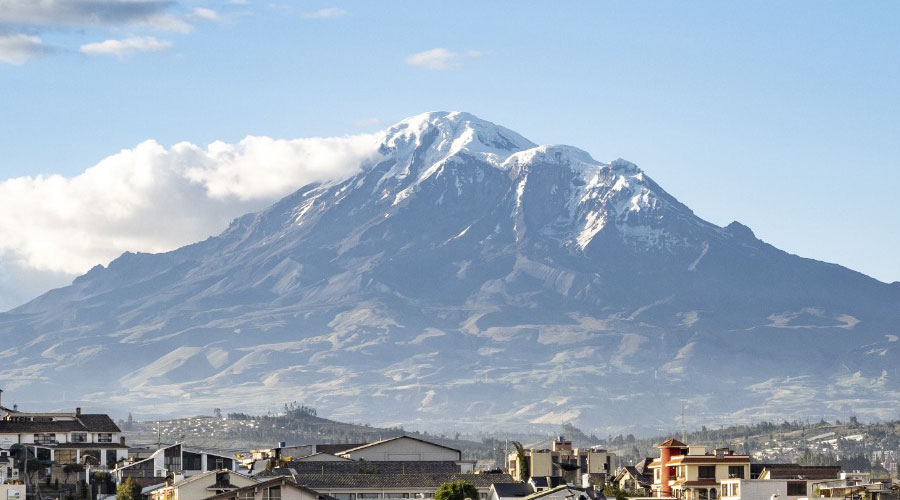Caluma Natural
From Ancient Rituals to Modern Perfection - Why Ecuador Produces the World's Finest Cacao
In the world of fine chocolate, one country stands above all others, producing cacao so exceptional that chocolatiers worldwide consider it the gold standard. That country is Ecuador. But to understand why Ecuadorian cacao reigns supreme, we must first journey through the remarkable history of this sacred bean that has captivated humanity for over 5,000 years.
The Ancient Origins: Cacao's Sacred Beginning
The Birthplace of Chocolate
While many associate chocolate with the Aztecs and Maya, recent archaeological discoveries have rewritten cacao's origin story. In 2018, researchers found evidence of cacao use in Ecuador dating back 5,300 years – 1,500 years earlier than in Central America. This makes Ecuador not just a producer of fine cacao, but its actual birthplace.
The Mayo-Chinchipe culture of southeastern Ecuador were the first known people to cultivate and consume cacao. They didn't eat chocolate bars – they prepared ceremonial drinks from the pulp and beans, considering cacao a gift from the gods.
The Mesoamerican Golden Age
As cacao cultivation spread northward, it became central to Mayan and Aztec civilizations:
Mayan Period (250-900 CE):
- Cacao beans used as currency (10 beans = 1 turkey)
- "Kakaw" drink reserved for royalty and priests
- Cacao pods depicted in religious art and hieroglyphss
- Mixed with chili, vanilla, and flowers for ceremonial drinks
Aztec Empire (1345-1521 CE):
- Called cacao "xocolatl" (bitter water)
- Emperor Montezuma reportedly drank 50 cups daily
- Warriors consumed cacao before battle
- Cacao beans more valuable than gold
The Divine Connection
Ancient civilizations believed cacao connected them to the divine:
- The Mayan god Ek Chuah was the patron of cacao
- Aztecs associated cacao with Quetzalcoatl
- Cacao used in marriage ceremonies, births, and funerals
- Only the elite could afford regular consumption
The European Transformation
Columbus Misses the Mark (1502)
Christopher Columbus encountered cacao beans on his fourth voyage but dismissed them as "almonds." He had no idea he'd encountered one of the world's most valuable commodities.
Cortés Changes Everything (1519)
Hernán Cortés recognized cacao's value after meeting Montezuma. He brought cacao to Spain in 1528, launching Europe's chocolate obsession. The Spanish:
- Added sugar to make it palatable to European tastes
- Kept chocolate a Spanish secret for nearly 100 years
- Established cacao plantations throughout their colonies
- Created the first chocolate houses in Madrid
The Chocolate Revolution Spreads
1600s: Chocolate reaches Italy, France, and England 1657: First chocolate house opens in London 1700s: Chocolate becomes fashionable among European aristocracy 1828: Dutch chemist Van Houten invents cocoa powder 1847: Joseph Fry creates the first chocolate bar 1875: Daniel Peter and Henri Nestlé invent milk chocolate
Ecuador: The Cacao Paradise
Why Ecuador Produces Superior Cacao
Ecuador's supremacy in cacao production isn't accidental – it's the result of perfect natural conditions and centuries of cultivation expertise.
1. Biodiversity Beyond Compare
Ecuador is the only country producing all four cacao varieties:
- Nacional (Fine Flavor Cacao): Found nowhere else on Earth
- Trinitario: Complex flavor hybrid
- Forastero: Robust and productive
- Criollo: Rare and delicate
2. Perfect Geographic Conditions
Ecuador's unique position creates ideal cacao-growing conditions:
- Equatorial location: Consistent 12-hour days year-round
- Altitude variety: Sea level to 1,200 meters
- Volcanic soil: Rich in minerals
- Microclimates: Each region produces distinct flavor profiles
- Amazon influence: Humidity and rainfall patterns
3. The Arriba Nacional: Ecuador's Crown Jewel
The Arriba Nacional cacao is Ecuador's indigenous variety, producing what experts call the world's finest chocolate:
- Floral notes: Jasmine and orange blossom
- Fruit complexity: Tropical fruits, citrus, berries
- Nutty undertones: Almonds and hazelnuts
- Minimal bitterness: Natural sweetness
- "Arriba" aroma: Unique fragrance that floats upstream
The Legend of Arriba
The name "Arriba" comes from a beautiful legend. When European traders sailed up Ecuador's rivers searching for the source of exceptionally fragrant cacao, they would ask locals where it came from. The answer was always "río arriba" (upriver), giving this precious cacao its name.
Ecuador's Cacao Regions: A Flavor Map
Los Ríos Province
- Flavor Profile: Classic Arriba with intense floral notes
- History: Original source of Nacional cacao
- Specialty: Most sought-after beans for luxury chocolate
Esmeraldas Province
- Flavor Profile: Fruity with banana and passion fruit notes
- Uniqueness: Green, tropical character
- Modern Development: New sustainable farming initiatives
Manabí Province
- Flavor Profile: Nutty, coffee-like notes
- Tradition: Centuries-old family farms
- Innovation: Organic and biodynamic practices
El Oro Province
- Flavor Profile: Balanced, mild, sweet
- Advantage: Consistent quality
- Export: Premium beans for Swiss chocolatiers
Amazon Region
- Flavor Profile: Wild, complex, earthy
- Significance: Original cacao genetics
- Conservation: Protecting ancient varieties
The Science Behind Ecuador's Superiority
Genetic Uniqueness
DNA analysis reveals Ecuadorian Nacional cacao has unique genetic markers not found elsewhere:
- 80% pure ancient genetics (vs. 10-20% in other regions)
- Natural disease resistance
- Higher concentration of flavor compounds
- Optimal fat content for chocolate making
Terroir: The Taste of Place
Like fine wine, Ecuador's cacao expresses terroir:
- Volcanic minerals: Create chocolate's depth
- Ocean breezes: Add salinity and complexity
- Mountain mists: Slow ripening for flavor development
- River valleys: Provide perfect humidity
Chemical Composition
Ecuadorian cacao contains:
- 40% more flavor compounds than African cacao
- Higher theobromine: Better mood enhancement
- More polyphenols: Superior health benefits
- Optimal cocoa butter: Perfect melting properties
The Cultural Heritage
Traditional Cultivation Methods
Ecuadorian farmers maintain practices passed down through generations:
- Chakras: Biodiverse agroforestry systems
- Lunar harvesting: Picking pods by moon phases
- Natural fermentation: Using banana leaves
- Sun drying: On wooden platforms called "tendales"
The Cacao Ceremony Continues
Indigenous communities still practice cacao ceremonies:
- Healing rituals using pure cacao
- Coming-of-age ceremonies
- Agricultural blessings
- Community bonding events
Ecuador's Modern Cacao Revolution
The Fine Flavor Renaissance
After decades of focusing on quantity, Ecuador has returned to its quality roots:
- 70% of the world's Fine Flavor Cacao comes from Ecuador
- Premium prices: 300-500% above commodity cacao
- Direct trade: Farmers connecting with chocolatiers
- Origin bars: Single-estate chocolates
Innovation Meets Tradition
Modern Ecuadorian cacao combines ancient wisdom with cutting-edge techniques:
- GPS mapping: Identifying optimal growing zones
- Genetic preservation: Saving heritage varieties
- Controlled fermentation: Perfecting flavor development
- Sustainability programs: Protecting forests while improving yields
Award-Winning Excellence
Ecuadorian cacao dominates international competitions:
- International Cocoa Awards: Most winning samples
- Academy of Chocolate Awards: Consistent gold medals
- Salon du Chocolat: Regular "Best Origin" winner
- Great Taste Awards: Multiple star ratings
The Global Impact
Luxury Chocolatiers' Choice
The world's finest chocolate makers specifically seek Ecuadorian cacao:
- Pierre Marcolini: "Ecuador produces chocolate's grand cru"
- Valrhona: Sources premium beans exclusively from Ecuador
- Amedei: Creates single-origin bars from Ecuadorian estates
- To'ak: Makes $400 chocolate bars from ancient Ecuadorian trees
Transforming the Industry
Ecuador's focus on quality has revolutionized chocolate:
- Bean-to-bar movement inspiration
- Transparency in sourcing
- Fair prices for farmers
- Environmental conservation
- Chocolate tourism growth
The Future of Ecuadorian Cacao
Challenges
- Climate change impacts
- Pressure from commodity markets
- Younger generation leaving farms
- International competition
Opportunities
- Growing demand for premium chocolate
- Eco-tourism and chocolate tourism
- Value-added processing in-country
- Protected designation of origin status
Preserving Paradise
Ecuador is implementing measures to protect its cacao heritage:
- Ecuador is implementing measures to protect its cacao heritage:
- UNESCO heritage site proposals
- Sustainable farming incentives
- Youth education programs
- International partnerships
Why This Matters to Chocolate Lovers
When you choose Ecuadorian chocolate, you're not just buying candy, you're:
- Tasting 5,000 years of history
- Supporting biodiversity conservation
- Preserving cultural heritage
- Encouraging sustainable farming
- Experiencing the world's finest cacao
The Tasting Experience
How to Appreciate Ecuadorian Chocolate
- Look: Notice the glossy finish and rich color
- Smell: Inhale the complex aromas
- Snap: Listen for a clean break
- Melt: Let it dissolve on your tongue
- Savor: Identify the flavor notes
Flavor Journey
- Initial: Bright fruit notes
- Middle: Floral and nutty complexities
- Finish: Long, clean, slightly sweet
Your Ecuadorian Chocolate Guide
What to Look For:
- "Arriba Nacional" designation
- Single-origin labels
- Estate names
- Harvest dates
- Fermentation details
Recommended Experiences:
- Visit Ecuadorian cacao farms
- Attend chocolate tastings
- Try ceremonial cacao
- Support direct-trade brands
- Learn traditional preparation methods
The Ultimate Truth
Ecuador doesn't just grow the world's best cacao it is the spiritual and biological home of chocolate. From the ancient Mayo-Chinchipe to modern master chocolatiers, Ecuador has nurtured and perfected this sacred crop for over five millennia.
Every time you taste true Ecuadorian chocolate, you're experiencing the culmination of perfect geography, ancient wisdom, genetic superiority, and passionate craftsmanship. It's not just chocolate it's liquid history, cultural heritage, and natural perfection in every bite.
The next time someone asks why Ecuador produces the world's finest cacao, you'll know: it's not just about quality it's about being the source, the origin, and the eternal guardian of chocolate's soul.
Ready to taste the story behind our chocolate?
At Caluma Chocolate, every bar is crafted at the source from our farm in Ecuador directly to your hands. No middlemen, no artificial ingredients just pure, sustainable flavor with a purpose. 👉 Order now and experience the difference.
